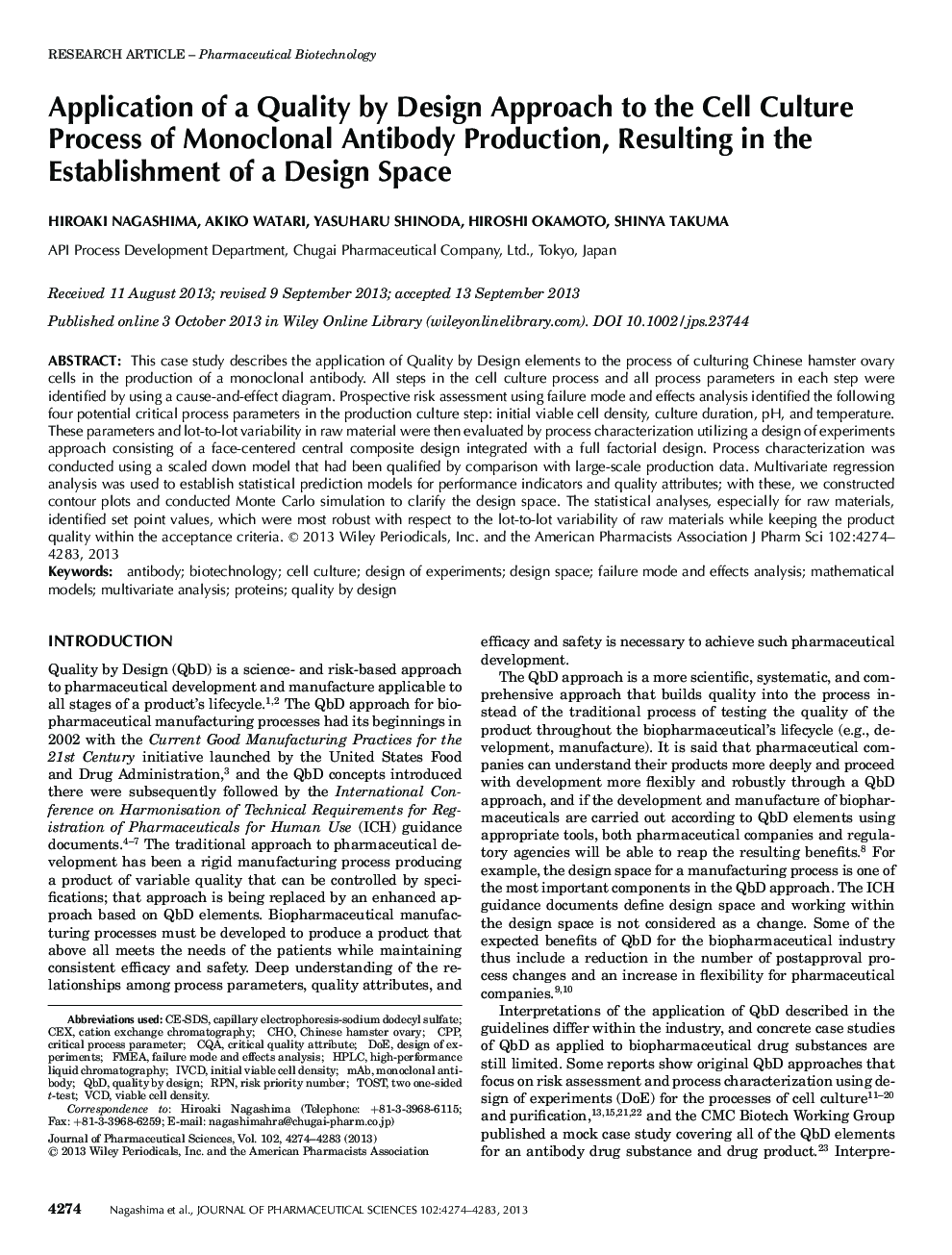| Article ID | Journal | Published Year | Pages | File Type |
|---|---|---|---|---|
| 2484946 | Journal of Pharmaceutical Sciences | 2013 | 10 Pages |
Abstract
This case study describes the application of Quality by Design elements to the process of culturing Chinese hamster ovary cells in the production of a monoclonal antibody. All steps in the cell culture process and all process parameters in each step were identified by using a cause-and-effect diagram. Prospective risk assessment using failure mode and effects analysis identified the following four potential critical process parameters in the production culture step: initial viable cell density, culture duration, pH, and temperature. These parameters and lot-to-lot variability in raw material were then evaluated by process characterization utilizing a design of experiments approach consisting of a face-centered central composite design integrated with a full factorial design. Process characterization was conducted using a scaled down model that had been qualified by comparison with large-scale production data. Multivariate regression analysis was used to establish statistical prediction models for performance indicators and quality attributes; with these, we constructed contour plots and conducted Monte Carlo simulation to clarify the design space. The statistical analyses, especially for raw materials, identified set point values, which were most robust with respect to the lot-to-lot variability of raw materials while keeping the product quality within the acceptance criteria.
Keywords
Related Topics
Health Sciences
Pharmacology, Toxicology and Pharmaceutical Science
Drug Discovery
Authors
Hiroaki Nagashima, Akiko Watari, Yasuharu Shinoda, Hiroshi Okamoto, Shinya Takuma,
